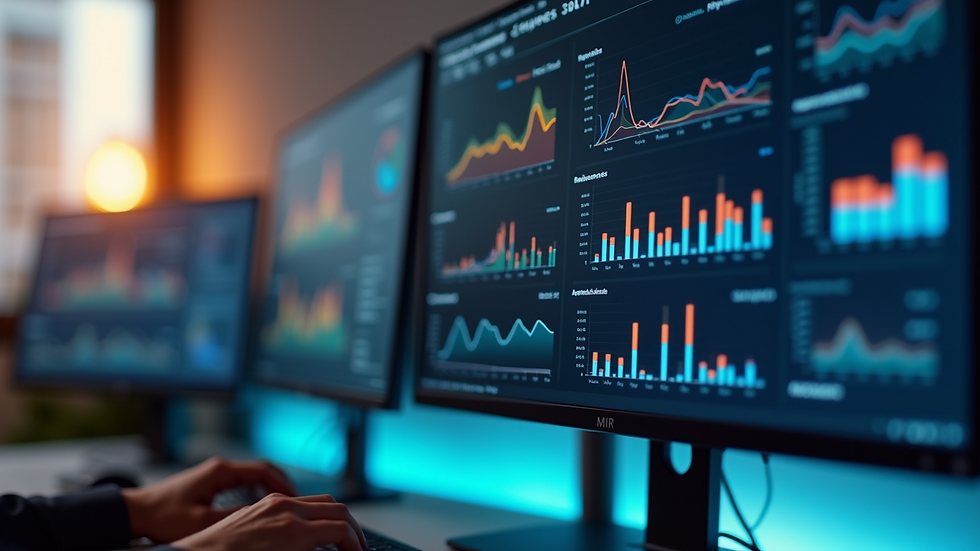Navigating the HR Tech Stack: Smart Investments for a Future-Ready Department
- Steven Sledzinski
- Jun 9
- 4 min read
In today's rapidly changing business environment, Human Resources (HR) departments are faced with a unique challenge. They must adapt to new technologies that can enhance their operations while ensuring that these tools meet the evolving needs of both employees and the organization. This post explores how to navigate the HR tech stack effectively, making smart investments that prepare your department for the future.
Understanding the HR Tech Stack
The HR tech stack refers to the collection of software tools and applications used by HR departments to manage various functions. These may include recruitment, onboarding, employee engagement, performance management, and payroll. As businesses increasingly rely on technology for their HR needs, it is crucial to understand how each component fits into the overall landscape.

Investing in the right tools can lead to significant efficiency improvements and better employee experiences. However, with the sheer number of HR tech solutions available, making informed choices is essential.
Key Components of a Modern HR Tech Stack
Recruitment and Onboarding
Recruitment tools help organizations attract, screen, and hire talent. Platforms like Applicant Tracking Systems (ATS) streamline the hiring processes, allowing you to manage candidates more effectively. Combine this with onboarding software that automates the initial training and paperwork process, and you create a frictionless start for new employees.
For example, using an ATS can reduce hiring time by up to 40 percent, which not only saves costs but also enhances job satisfaction for new hires. This quick transition can lead to increased retention rates and a stronger organizational culture.
Employee Engagement and Performance Management
Employee engagement tools monitor employee satisfaction and engagement levels. This data can unlock valuable insights about the workforce, helping HR departments foster a supportive environment.
Performance management systems are vital for tracking employee development and ensuring that individuals align with the organization’s goals. Continuous feedback mechanisms, facilitated by digital tools, help employees stay on track, leading to improved performance.

Learning and Development
A robust learning management system (LMS) ensures that employees have access to continuous professional development. These systems provide a platform for training programs, compliance tutorials, and skill development courses.
Investing in LMS technologies fosters a culture of continuous learning, allowing employees to grow within the organization. According to industry research, companies that focus on employee training report 24% higher profit margins.
HR Analytics and Workforce Planning
HR analytics tools provide insights based on data collected across various HR functions. These insights can help HR professionals make informed decisions that affect the organization. Metrics like turnover rates, employee satisfaction scores, and training effectiveness can be tracked and analyzed for actionable intelligence.
Workforce planning tools help anticipate future staffing needs and optimize workforce dynamics. With adequate data analysis, HR departments can formulate strategies to meet business demands, thus avoiding skill gaps or talent shortages.

Current Trends in HR Technology
Cloud-based Solutions
Cloud technology has revolutionized how HR functions operate. It offers flexibility and accessibility to HR solutions, allowing teams to manage their tasks remotely. This shift enables small and large businesses alike to utilize advanced HR tools without the burden of maintaining complex infrastructures.
AI and Automation
Artificial Intelligence (AI) is increasingly being integrated into HR tech stacks. From automated chatbots for answering employee inquiries to AI-driven data analysis to enhance recruitment, the potential applications are vast. Automation significantly reduces repetitive manual tasks, freeing up HR professionals to focus on strategic initiatives.
Employee Experience Platforms
The employee experience platform concept is gaining traction. These platforms integrate various HR functions into a single, seamless experience for employees. This holistic approach can enhance engagement, streamline processes, and foster a stronger connection between employees and the organization.
Choosing the Right HR Tech Solutions
Assessing Your Needs
Before investing in any technology, assess your organization’s current needs and future goals. Consider factors like the number of employees, departmental challenges, and organizational culture. This assessment can guide you in selecting tools that align with your objectives.
Scalability and Integration
Choose technologies that can scale according to your company’s growth. When selecting tools, consider how well they integrate with existing systems. Poor integration can lead to data silos that undermine the benefits of your tech stack.
User Experience
Selecting user-friendly tools encourages adoption among employees. Conduct demos and gather feedback from team members about different platforms. They will be the primary users, so their experience is crucial.
The Importance of Continuous Evaluation
Once you have implemented your HR technology, continuous evaluation is essential. Regularly measuring the effectiveness of your investments will ensure they meet the evolving needs of your team and the broader organizational goals. This might include gathering employee feedback, tracking performance metrics, or conducting regular audits on technology utilization.
Looking Ahead: A Future-Ready HR Department
Investing in the right HR tech tools is not just about immediate needs; it’s about preparing your department for the future. As the workplace continues to evolve, organizations that prioritize smart technology investments will be better equipped to navigate changes.
Incorporating a future-ready mindset can significantly enhance not only the HR department's efficiency but also the overall success of the organization as a whole. By leveraging data and technology wisely, HR can transform employee experiences and drive organizational effectiveness.
By acknowledging current trends, evaluating your needs, and embracing innovation, your HR department can become a cornerstone of your organization's success. The right HR tech stack enables leaders to focus on strategy rather than being bogged down by administrative tasks, paving the way for a thriving, future-ready workforce.

